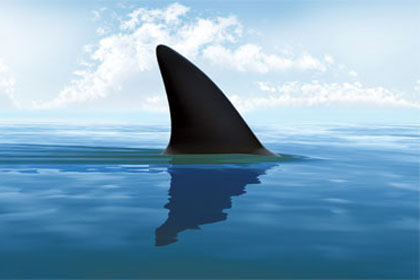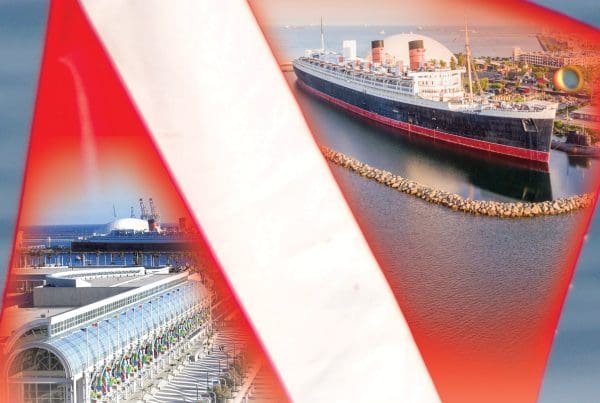The 2015 El Niño may have a significant impact on weather and climate, but that’s not all. Researchers are blaming El Niño, a period of increased water temperatures in areas of the Pacific Ocean, for increased numbers of shark sightings on the West Coast.
This pattern of increased sea surface temperatures generally causes more storms in places like southern California, Mexico and South America. During El Niño periods, Australia and Indonesia tend to get significantly less rainfall.
Now marine scientists are taking note of the fact that the warmer water is allowing sharks, like hammerheads and great whites, to extend their northern range and move closer to shore looking for food. Experts think the sharks are following prey such as red crabs, tuna, sea lions and other marine life, which are also being seen farther north, too.
Dr. Chris Lowe, a professor of marine biology and director of the Shark Lab at Cal State Long Beach was quoted in a weather.com article by Eric Chaney, saying, “It may look like there are more sharks around this year; that’s because there are. They’re not doing their typical migration.” Lowe explained that sharks tagged and tracked by his lab typically migrate south to Mexico in the winter. But the past two years, all the tagged sharks in the South Bay and Los Angeles county area have stayed put.
Lowe theorizes that warm ocean temperatures caused by this year’s El Niño are to blame.
Human-shark encounters are on the increase. According to the nonprofit Shark Research Committee’s website, sharkresearchcommittee.com, several dozen unusual shark sightings and human-shark incidents have been reported in California waters over the last few months.
A hammerhead shark bit kayaker Dylan Marks of Santa Monica while Marks was fishing for yellowtail a few miles north of Malibu’s Zuma beach on the afternoon of September 5, 2015. Marks was dangling his foot in the water when he was bitten. His injuries were not life threatening.
On September 21, NBC4 News at 11 reported that another kayaker, Bill Morales, recorded video footage of a hammerhead shark circling his boat about a half-mile off Dana Point Harbor. Morales showed television news reporter Hetty Chang bite marks in the kayak he claims were made by the hammerhead during the encounter.
Still other sightings have been reported by boaters, surfers and swimmers, prompting temporary beach closings at several popular SoCal beaches.
Climate experts are comparing the current El Niño to the 1997-98 pattern, which was the most powerful on record. This year’s El Niño is predicted to be even more powerful, with higher overall sea surface temperatures extending across a wider, more northerly area of the Pacific. Even bigger temperature anomalies than the 1997 event are expected, and it’s likely they will continue intensifying into the fall and winter months, possibly lasting into spring 2016.
Recently, climatologists have taken to nicknaming record-setting weather events, much in the same way hurricanes have been named. California-based NASA oceanographer Bill Patzert calls this El Niño “Godzilla,” while a NOAA blogger unofficially named it the “Bruce Lee” of El Niños, after the late action-movie star.
NOAA El Niño Forecast
For more information to NOAA’s winter weather forecast, go to: noaanews.noaa.gov/stories2015/101515-noaa-strong-el-nino-sets-the-stage-for-2015-2016-winter-weather.html.










